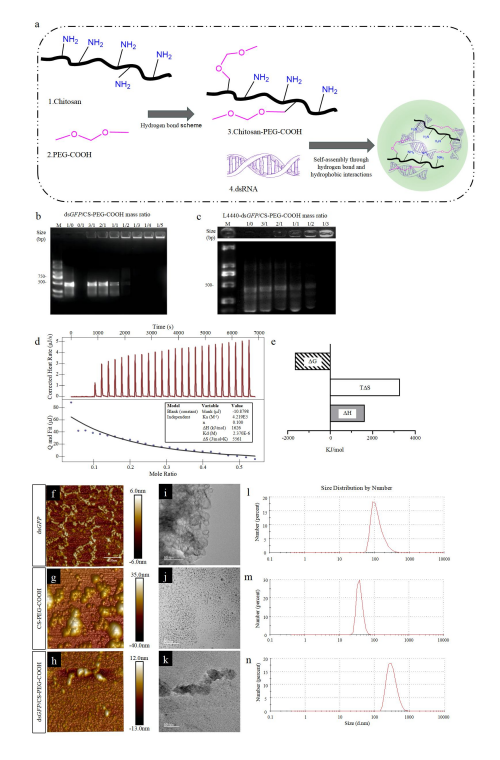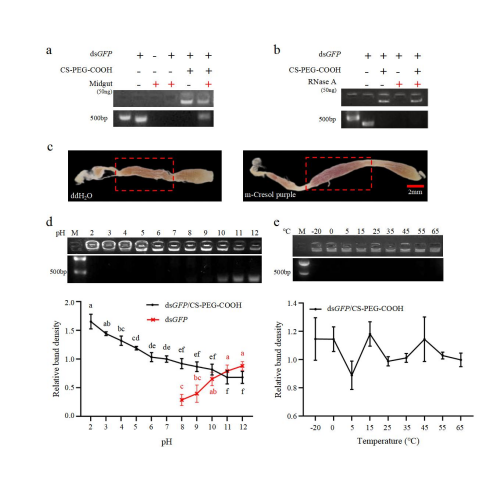To enhance the RNAi efficiency of dsRNA against the Spodoptera exigua through a feeding method, we developed a pH-responsive nanoparticle, chitosan-polyethylene glycol-carboxyl (CS-PEG-COOH). This nanoparticle enhances RNAi efficiency by improving dsRNA stability in the midgut of S. exigua and can intelligently release dsRNA under alkaline conditions. Firstly, the CS-PEG-COOH carrier was prepared via cross-linking reactions, and the mass ratio of dsRNA to CS-PEG-COOH was obtained using electrophoretic mobility. The carrier composite materials were then characterized using isothermal titration calorimetry (ITC), transmission electron microscopy (TEM), atomic force microscopy (AFM), and Zeta potential analysis. The stability and delivery efficiency of the dsRNA/CS-PEG-COOH complex were then verified using electrophoretic mobility and fluorescence labeling methods. Finally, the RNAi efficiency and synergistic mechanism of the complex were analyzed using feeding methods and RNA-seq. The results show that CS-PEG-COOH (40.16 nm size, + 6.44 mV charge) forms a clustered complex with dsRNA through hydrogen bonding and hydrophobic interactions. CS-PEG-COOH significantly enhancing the stability and delivery efficiency of dsRNA in the midgut of S. exigua. Additionally, at pH > 8, dsRNA could be released from dsRNA/CS-PEG-COOH. The RNAi results showed that, dsRNA/CS-PEG-COOH could effectively inhibit the expression of the Acetylcholinesterase (Ace1 + Ace2) gene (65 %), and led to significantly increase mortality (51.82 %), a prolonged developmental period (25 %) and reduced egg production (22.02 %). The physiological and molecular synergistic mechanisms were revealed by RNA-seq analysis. The CS-PEG-COOH-loaded dsACE1 + dsACE2 led to down-regulation of genes related to drug metabolism, hormone synthesis, and stratum corneum biosynthesis, which inhibited insect growth and development. Overall, We developed an appropriate delivery method for dsRNA application in Lepidoptera, providing a basis for developing RNA pesticides with high efficiency and environmental safety.


Read more: https://doi.org/10.1016/j.ijbiomac.2025.141763



